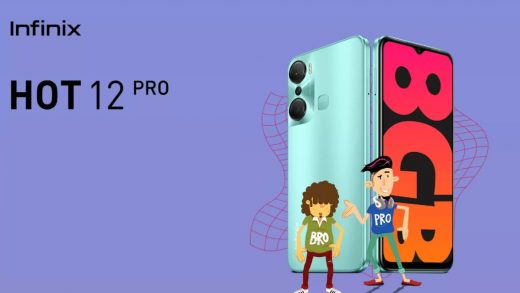All products recommended by Engadget are selected by our editorial team, independent of our parent company. Some of our stories include affiliate links. If you buy something through one of these links, we may earn an affiliate commission. All prices are correct at the time of publishing.
Regardless of how 2022 went for you, 2023 is another chance for all of us to make the new year better than the one that came before it. We set New Year’s resolutions with the best of intentions, but it’s no wonder that so many people fail after just a few weeks – old habits die hard. Just as it’s important to have a supportive group of people cheering you on during those particularly hard days, it’s also important to have tools that make it easier to achieve your goals. Whether you’re trying to get healthy, be more organized or read more, there are tech tools that can make your journey a bit easier (and maybe even more enjoyable).
Fitness tracker
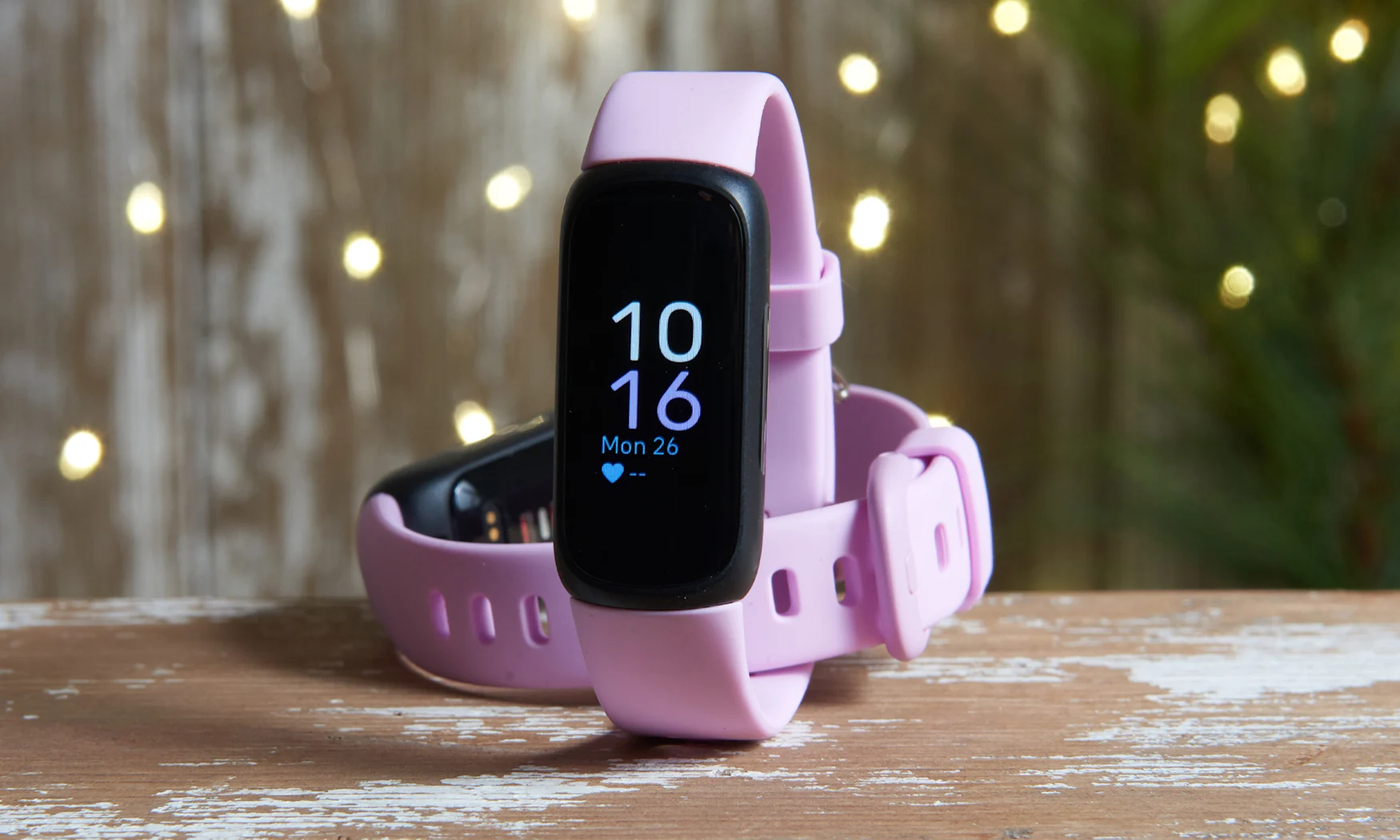
Will Lipman Photography for Engadget
If you’re attempting to turn over a new, healthy leaf this year, you’re not alone. Fitness trackers (and their companion apps) are highly sought after this time of year because they can help you stick to those new movement, hydration and sleep habits you’re trying to build. Fitbit’s Inspire 3 is an all-around good option, not only because it’s relatively affordable at $100, but because it does pretty much everything a beginner would need a fitness tracker to do. It tracks daily steps, calories, heart rate, sleep and more, and it comes with 20 goal-based exercises that you can manually track or let the device’s automatic SmartTrack feature monitor for you. It also has 10-day battery life, so you rarely have to take it off to charge it.
If you’re already a runner or a cyclist (or want to be one), we recommend upgrading to the Fitbit Charge 5 instead. You’ll get all of the features that the Inspire 3 has along with onboard GPS for mapping outdoor workouts and Fitbit Pay for contactless payments. That way you’ll be able to go for a run in the morning and stop to grab a coffee without bringing your phone or your wallet with you.
Smartwatch
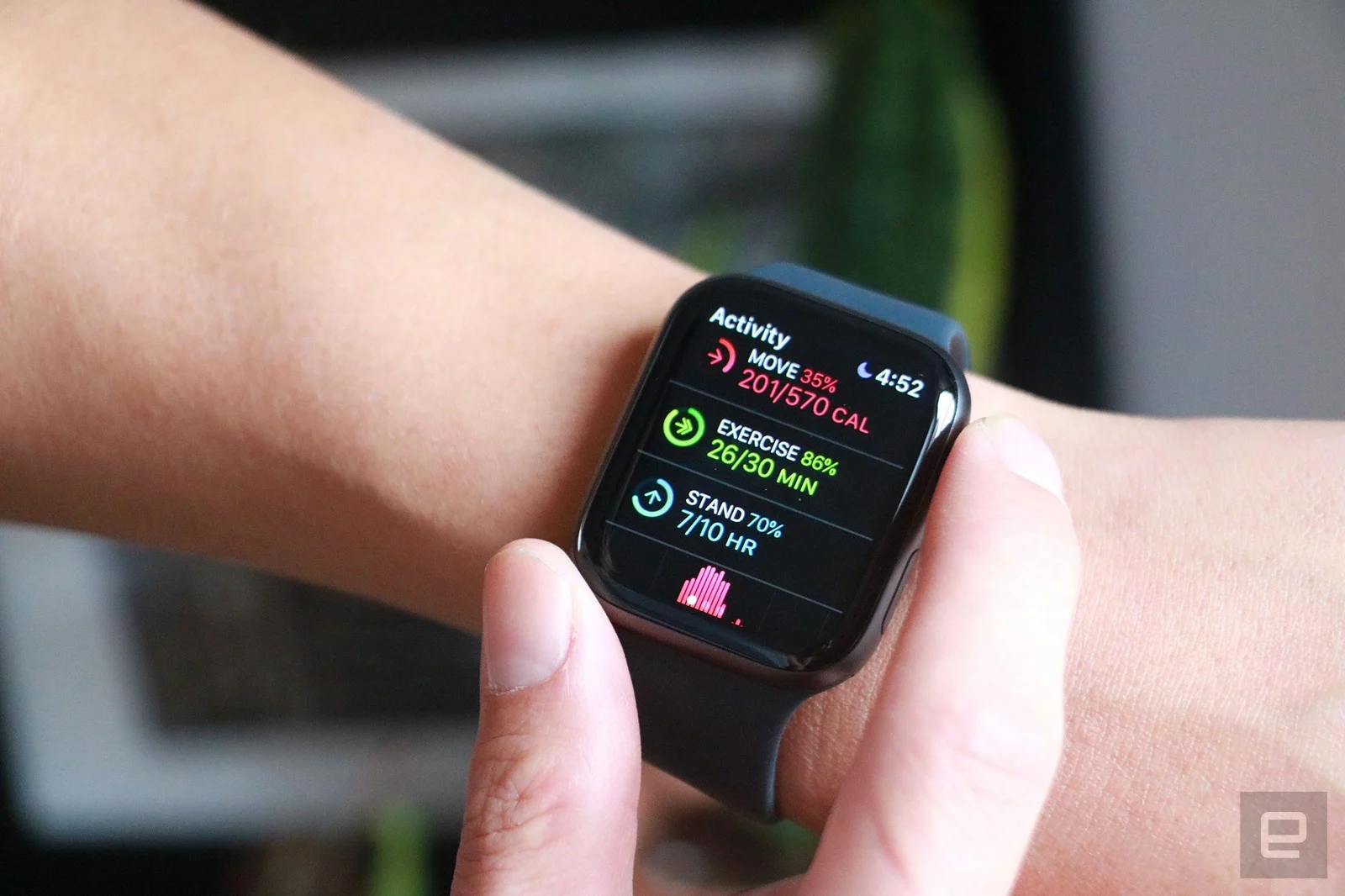
Cherlynn Low / Engadget
If you’d rather invest in an all-purpose wearable that also has serious fitness chops, the Apple Watch SE is a good choice. While it doesn’t include all of the bells and whistles that the pricier Series 8 does, it still offers the same core experience as any Apple Watch. It tracks all-day activity and heart rate, and watchOS finally offers basic sleep tracking, too. In addition to built-in GPS for outdoor workouts, it tracks dozens of trackable exercises and supports fall detection and high and low heart rate notifications. It’s also quite good at automatically recognizing when you’re working out and prompting you to start tracking your efforts. On top of all that, the Apple Watch excels over basic fitness trackers when it comes to table-stakes smartwatch features: You’ll be able to send and receive text messages from the device, as well as control music playback, smart home devices and more.
Workout classes
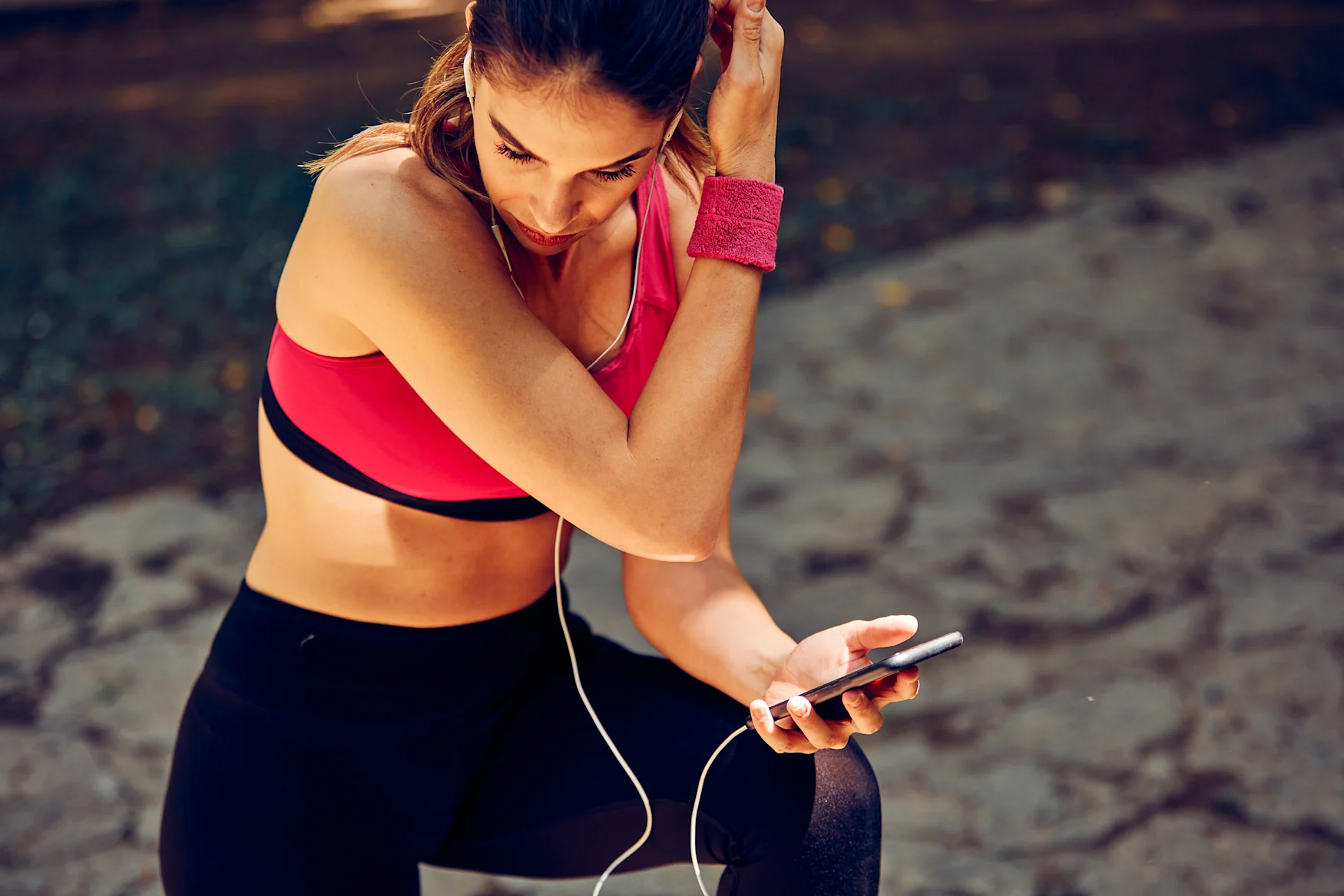
Finding exercise classes that you enjoy can make working out a habit you’re more likely to stick with for the long haul. You may prefer to do this through your local gym — that push to get out of the house and into a dedicated exercise space can be really effective for some — but there are plenty of on-demand fitness classes as well that you can participate in from the comfort of your living room.
I’ve tried my fair share of these services and my favorite has been Peloton. No, you don’t need one of the company’s expensive bikes or treadmills to take advantage of their classes. Access to the app-only version of the subscription costs $13 per month and it lets you take HIIT, strength, yoga and even outdoor running classes, many of which require little to no equipment at all. If Peloton isn’t your speed, Apple Fitness+ is a good alternative, especially now that anyone with an iPhone can subscribe and take classes, regardless of whether they own an Apple Watch. Alo Moves is another good option for those who prefer yoga and pilates workouts.
If you can’t afford another monthly subscription fee, the internet has tons of free exercise resources — you just have to work a little harder to find the ones you jive with most. I highly recommend Fitness Blender, a free website where you can watch hundreds of workout videos and even set a schedule for yourself, assigning videos to specific days of the week. I like the quality and consistency of their videos, but you may connect more to YouTube workout videos if they’re taught by instructors you like; Heather Robertson and Move with Nicole are two personal favorites.
Habit tracker
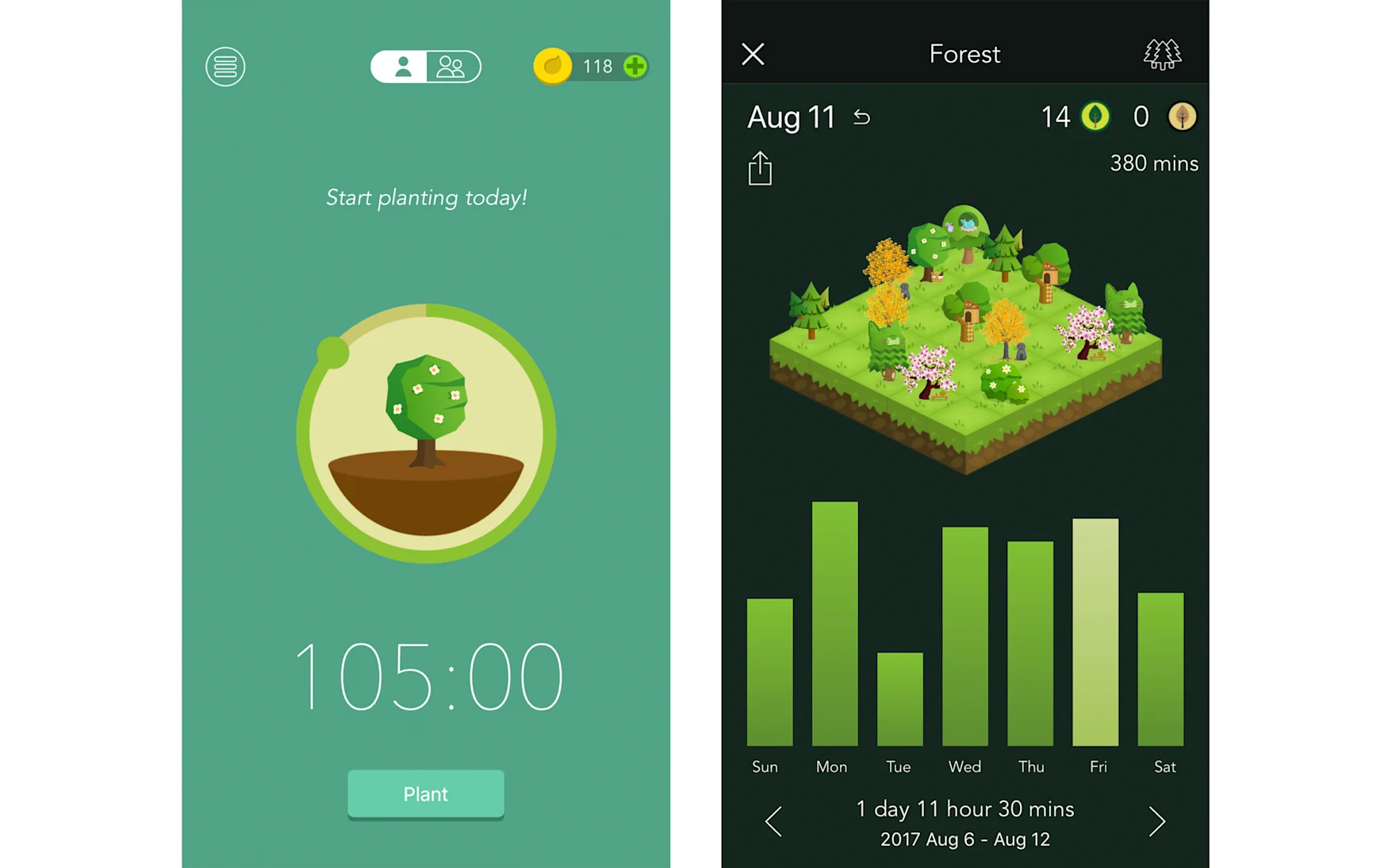
Forest
At least in the beginning, keeping track of new habits you’re trying to build can help you stick to them. While you can get deep into this subject if you wander down the bullet-journal rabbit hole, a habit-tracking app is probably the easier option. Done and Strides are two iOS options that let you log when you’ve completed a new habit you’re trying to build or when you avoided a bad habit that you’re trying to break. You can get pretty granular, customizing how often you want to do a task, setting reminders to log, reviewing stats and more. However, both apps have paid tiers to which you’ll be asked to subscribe after you create a few trackable habits.
If you’d rather avoid yet another subscription, consider an app like Streaks, which can be all yours for a one-time fee of $5. As for Android, Grow is a free app that takes a similar approach to habit tracking that Forest takes with time management. Plant a virtual tree for each new habit tracked and watch it grow every time you log a completion. There’s also Habitica, which turns habit tracking to an 8-bit RPG game where you level-up your custom avatar by checking things off your list.
To-do and note-taking apps
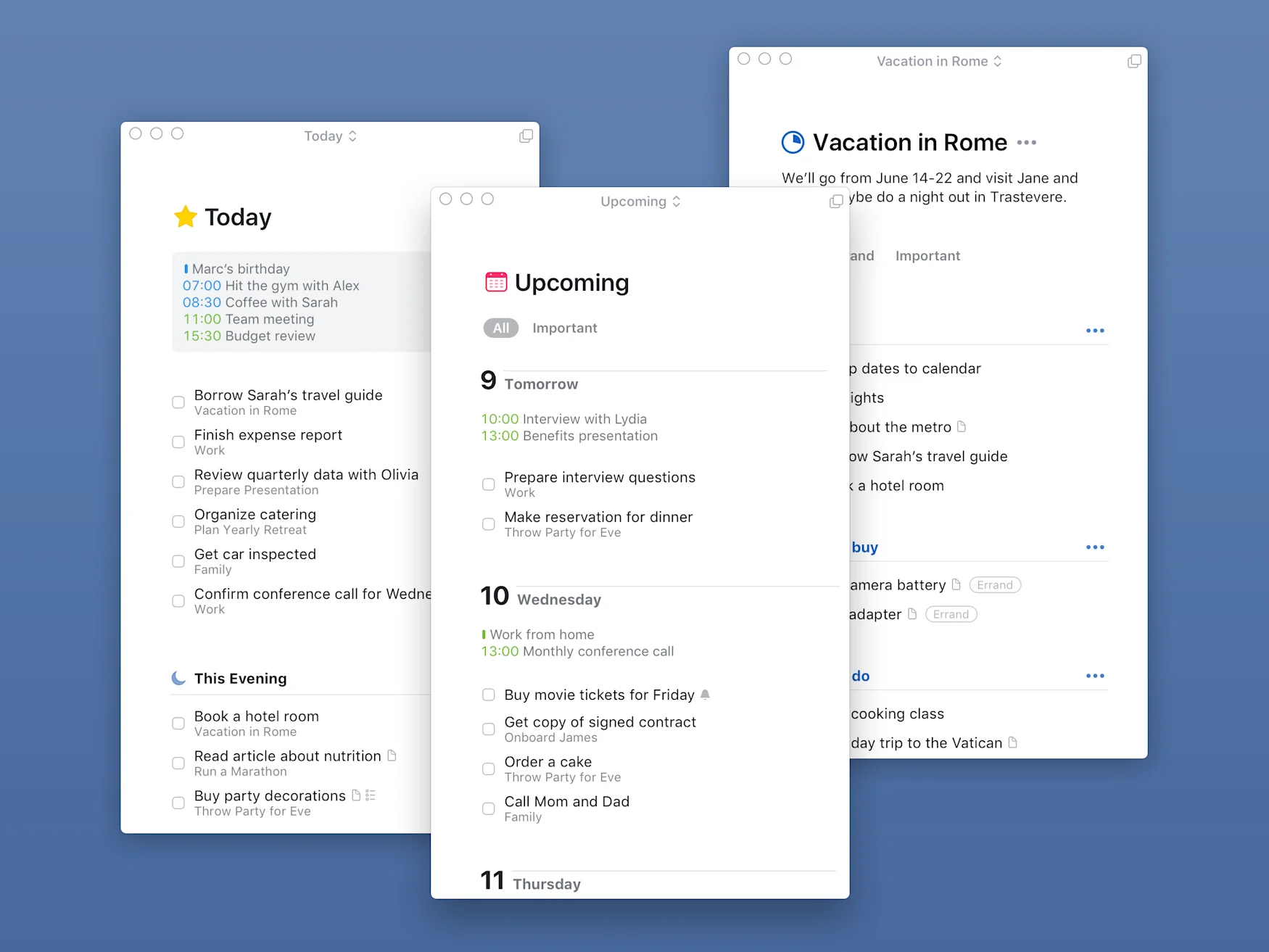
The new year provides an opportunity to get back on track, and one way to do that is by finding organizational tools that work for you — and making sure they’re as uncomplicated as possible. The worst thing that could happen is that your to-do list or note-taking system ends up being so cumbersome that you avoid using it. Keeping all of your necessary tasks in your head may work on easy days, but it can quickly get overwhelming when you have a million things to handle in both your personal and professional life. I’m a fan of Todoist and Things (for iOS and macOS only) because both are detailed enough for big work projects, but simple enough for personal tasks. Both also have a Today view, which will show everything across all of your projects that need attention immediately.
While Todoist has a free tier, you’ll pay $80 to get Things for iOS, iPadOS and macOS. Microsoft’s To Do is an alternative that, while less involved than Things, is free and works on almost every platform including Windows, iOS and Android, among others. You can keep it simple and just have a task list and a grocery list, or you can go deeper and add due dates, sub-tasks and even share lists with family members. And if you don’t want to bother with an extraneous app, you can always opt for the reminders app that (most likely) came preinstalled on your phone. That would be Reminders for iOS users and Google Keep for Android users.
Google Keep also doubles as a note-taking app, which will be a better solution if you’ve been constantly jotting down ideas for new projects on Post-It notes or scraps of paper that you eventually lose. Apple Notes is the default option for this on iOS devices, and there are plenty of other note-taking apps out there as well. I’m partial to Evernote simply because it’s become my digital file box of sorts. I often forward things like online order receipts, messages from my doctor’s office and e-signed contracts from my email to Evernote so I can keep track of them and find them more easily in the future if need be.
Password manager
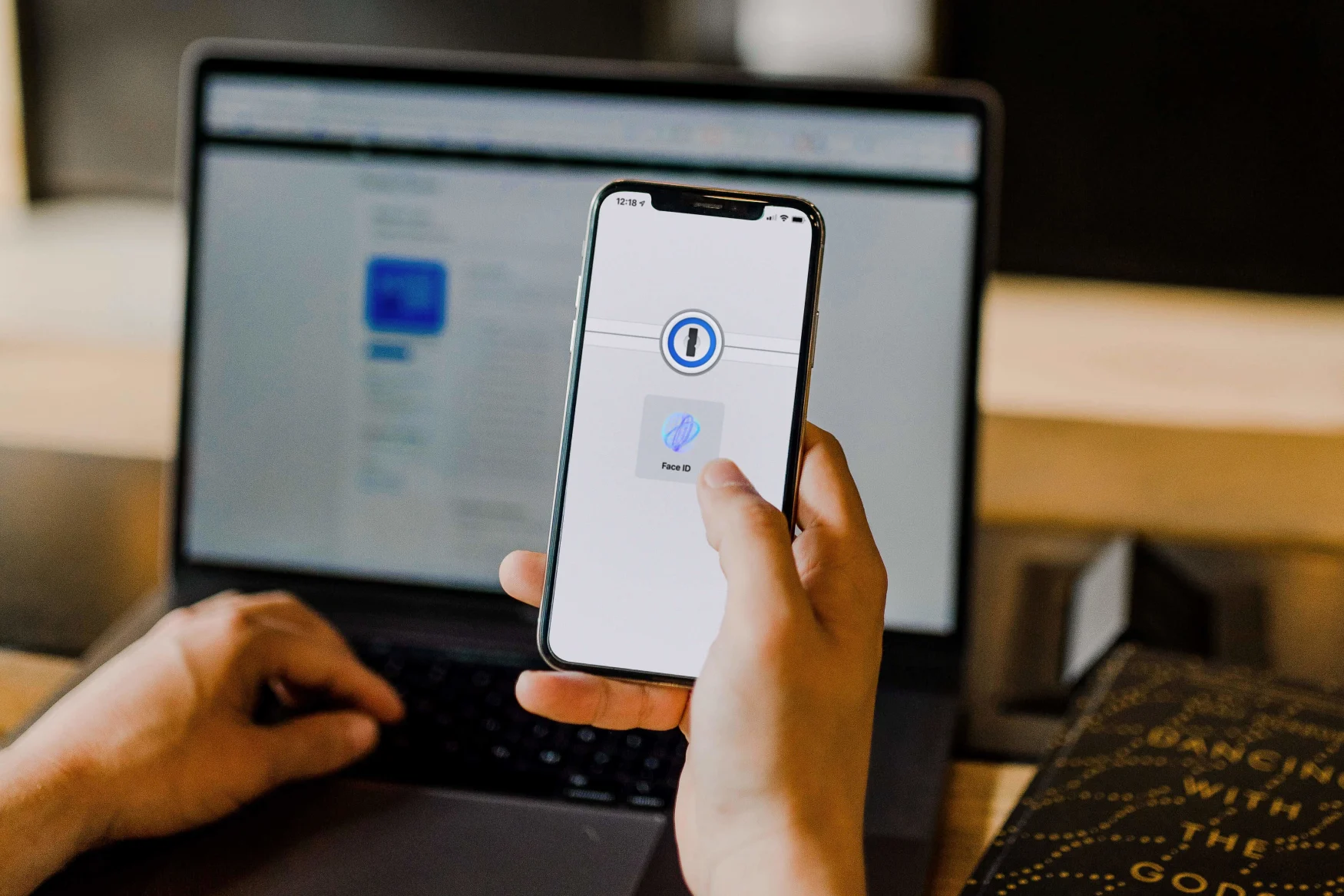
If you’re looking to up your digital security game in the new year, a password manager is a great place to start. I’m partial to 1Password, but there are plenty of other options including LastPass (which has a free version), Bitwarden and Dashlane. After saving all of your passwords for various accounts, you only need to remember one (hence the name) to log in to your 1Password account and access all of the others. The service has browser extensions Chrome, Edge and others that will let you seamlessly log in with the proper credentials with just a few clicks, and 1Password has apps for most platforms including iOS and Android, so you can use it on all of your devices.
I also appreciate the Password Generator feature, which helps you create a new, secure password whenever one of yours has expired. LastPass has this too, and Dashlane even has a free tool that anyone can use to make more secure passwords. Not only does this take the onus of coming up with a strong key off your shoulders, but it also makes it easy to override old credentials with new ones.
Cable and accessory organizer
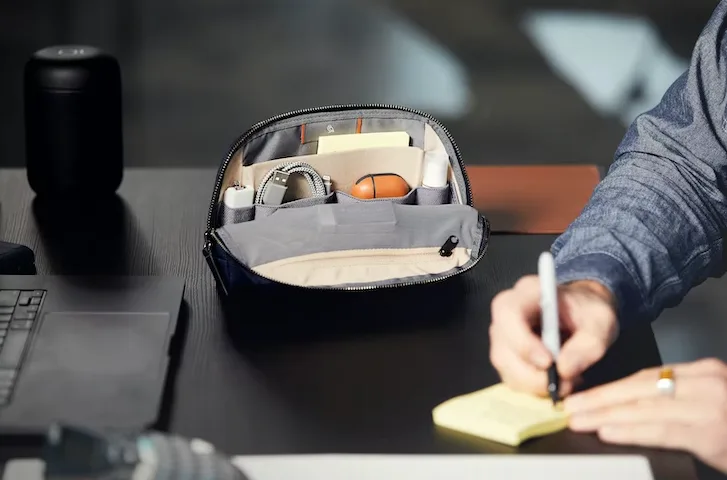
Bellroy
One of the consequences of the past couple of years is the dual-office life. Many of us now work both from home and from an office, and the last thing you want to do when you arrive in either place is rummage around your backpack only to realize that you’ve left your mouse, charging cable or dongle at your other desk.
An organizer bag can prevent this before it happens – we recommend BagSmart tech organizers thanks to their utilitarian, water-repellent designs and their multiple pockets and dividers. They also come in different sizes, so you can pick the best one for your commuter bag. If you want something a bit more elevated, Bellroy’s Desk Caddy is a good option. It’s pricier but for the money you get a more elegant silhouette, higher-quality materials and a design that sits upright when full and has a front panel that fully folds down to give you a good view of what’s inside.
Computer docking station
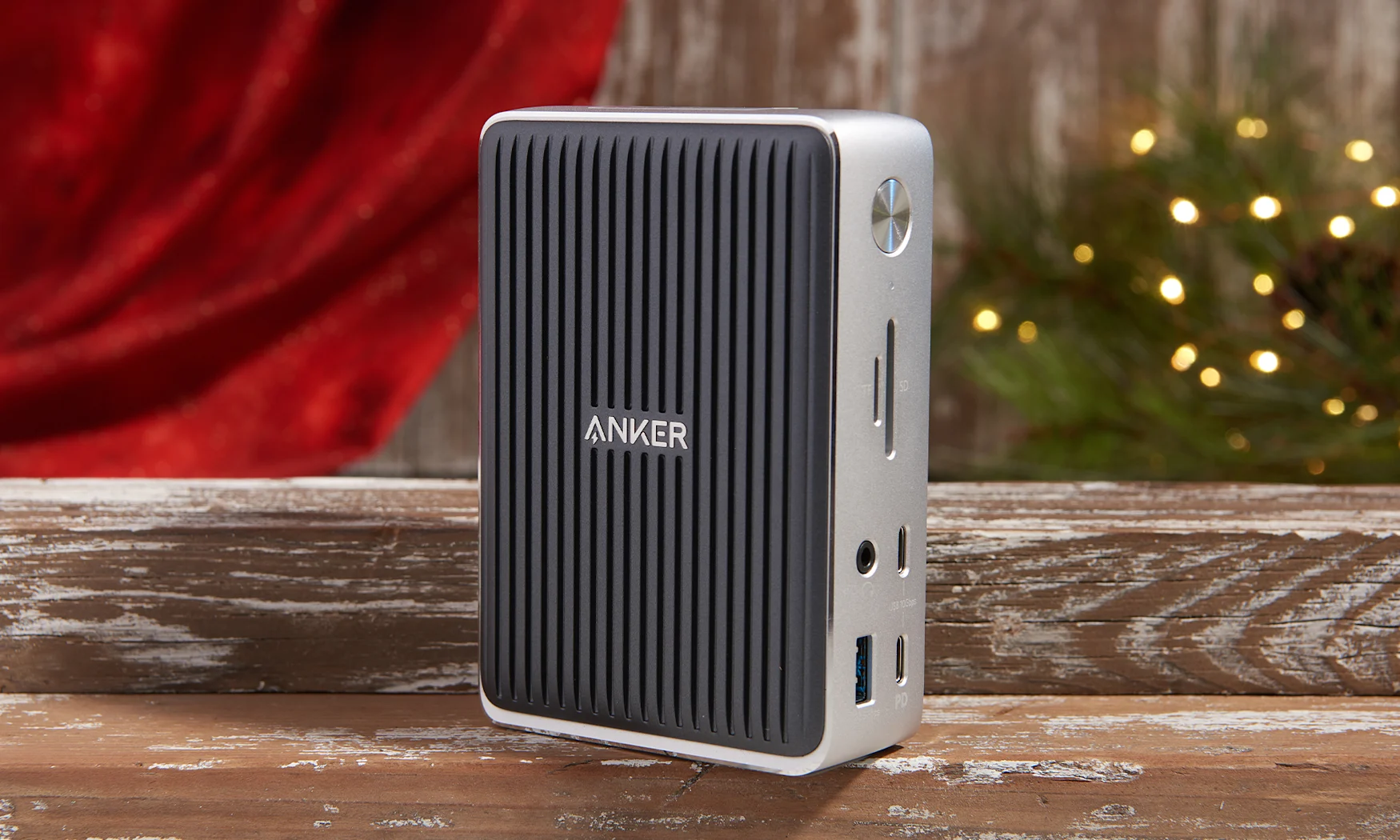
Will Lipman Photography for Engadget
It’s all too easy for your work-from-home setup to get really messy really quickly. When you’re going through your busiest times at work, the last thing you’re thinking about is cable management, but dedicating a bit more effort into tidying up your workspace can make your day to day more efficient and more enjoyable.
We recommend some sort of docking station to keep your laptop, monitors, accessories and the like in check. Anker’s 577 Thunderbolt docking station is a good pick, with a generous selection of 13 ports that include dual Thunderbolt 3 sockets, two USB-C connectors, four USB-A ports, an Ethernet jack and more. Plus, it can connect to two 4K displays at once. You can even pair it with up to a 5K, 60Hz monitor if you wish. We also like that it provides 85W power to your laptop, so it will keep your machine charged while you use it.
The 577 is a stationary option, but there are plenty of adapters out there that can give you similar organization while on the go, albeit in a less elegant package. Anker’s USB-C hub is an affordable solution that includes an HDMI port, microSD and SD card readers, two USB-C connections and two USB-A sockets. It also supports 100W power pass-through, so you can charge your laptop through the hub while using it.
Instant Pot

Eating healthier — or even just avoiding takeout multiple times a week — can be challenging in part because it usually means cooking more at home. Not only is that hard to do when you’re starting from zero, but it’s especially tough because it takes more time than ordering in from your phone. But tools like an Instant Pot can make the process easier because it cuts your active cooking time down drastically. You can find a plethora of recipes in which you simply throw a bunch of ingredients into the pot, set it and forget it until it’s time to eat.
We recommend the Instant Pot Duo for beginners because it’s relatively affordable and combines seven different cooking methods into one appliance, including rice cooking, steaming, pressure cooking, slow cooking and more. If you’re primarily cooking for yourself and a partner, the three-quart model will serve you just fine, but we recommend the six-quart model if you’re routinely cooking for four or more. If the thought of cooking at home actually excites you rather than fills you with anxiety, consider the Instant Pot Ultra, which includes a few extra modes like cake maker and egg cooker, or the Instant Pot Duo Crisp, which includes an air-fry lid.
Recipe organization
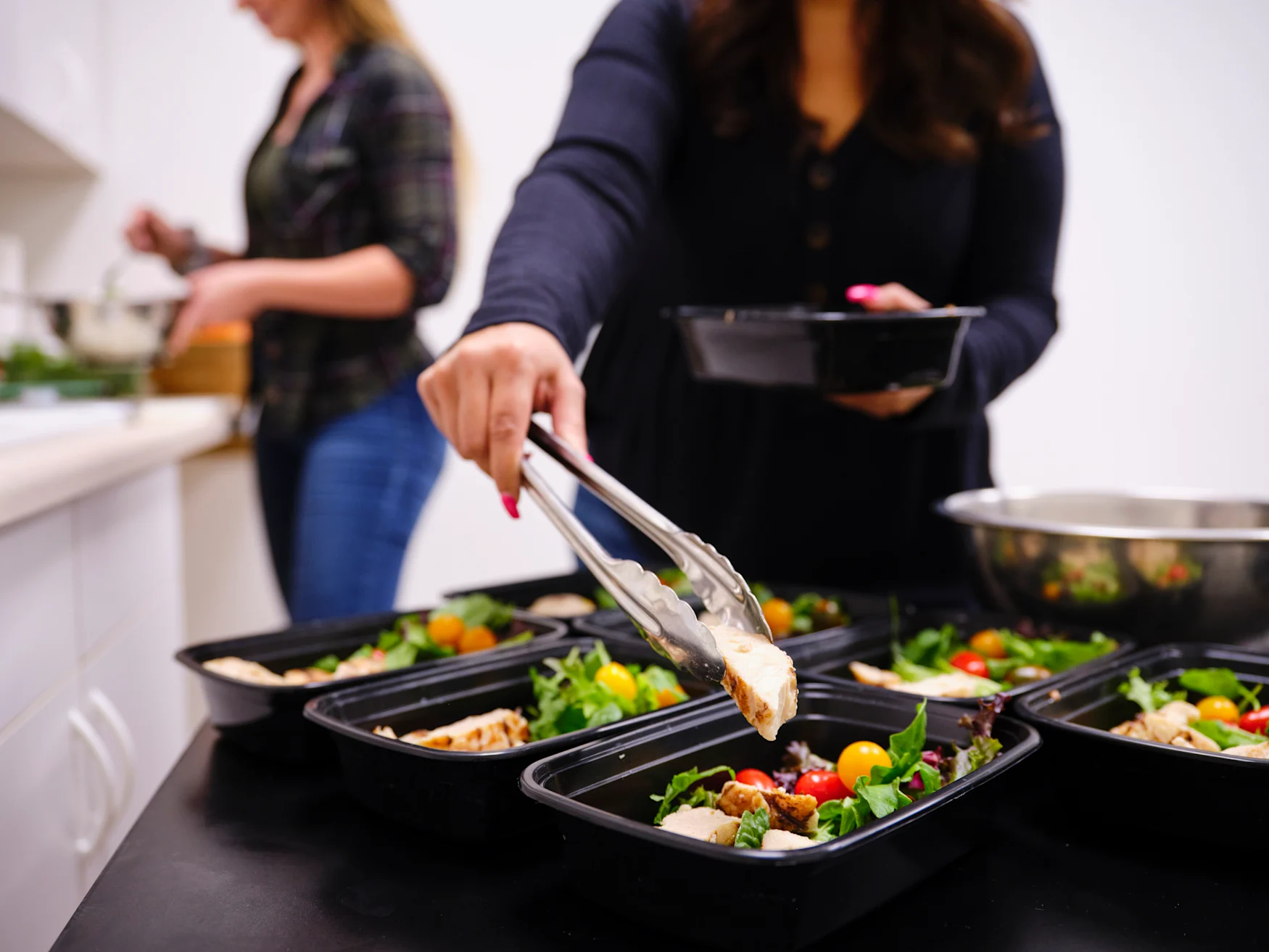
One of the best things about cooking at home is finding recipes that you love so much that you want to make over and over again. You’ll want to keep those recipes safe and readily available so you can refer to them when you need a quick weeknight meal or a dish to bring to your next family reunion. Recipe cards are a great way to do this, and you’ll build up your rolodex of delicious meals over time. If you’d rather have a cookbook of sorts that you fill in yourself over time, opt for a recipe book instead.
If you’d rather keep your arsenal of recipes accessible at any time, anywhere from your phone, Paprika’s recipe management app is the best solution I’ve tried. The $5 app basically acts as your digital recipe box, allowing you to enter recipes of your own as well as download them from the internet. You know those hundreds of words that precede online recipes, in which the author divulges their entire life story before telling you their secret to making deliciously moist cornbread? Paprika strips all of those unnecessary bits out and only saves the ingredient list and the instructions. You can also make grocery lists and keep track of pantry staples in the app, so don’t be surprised if it quickly becomes one of your most-used kitchen tools.
Reading app
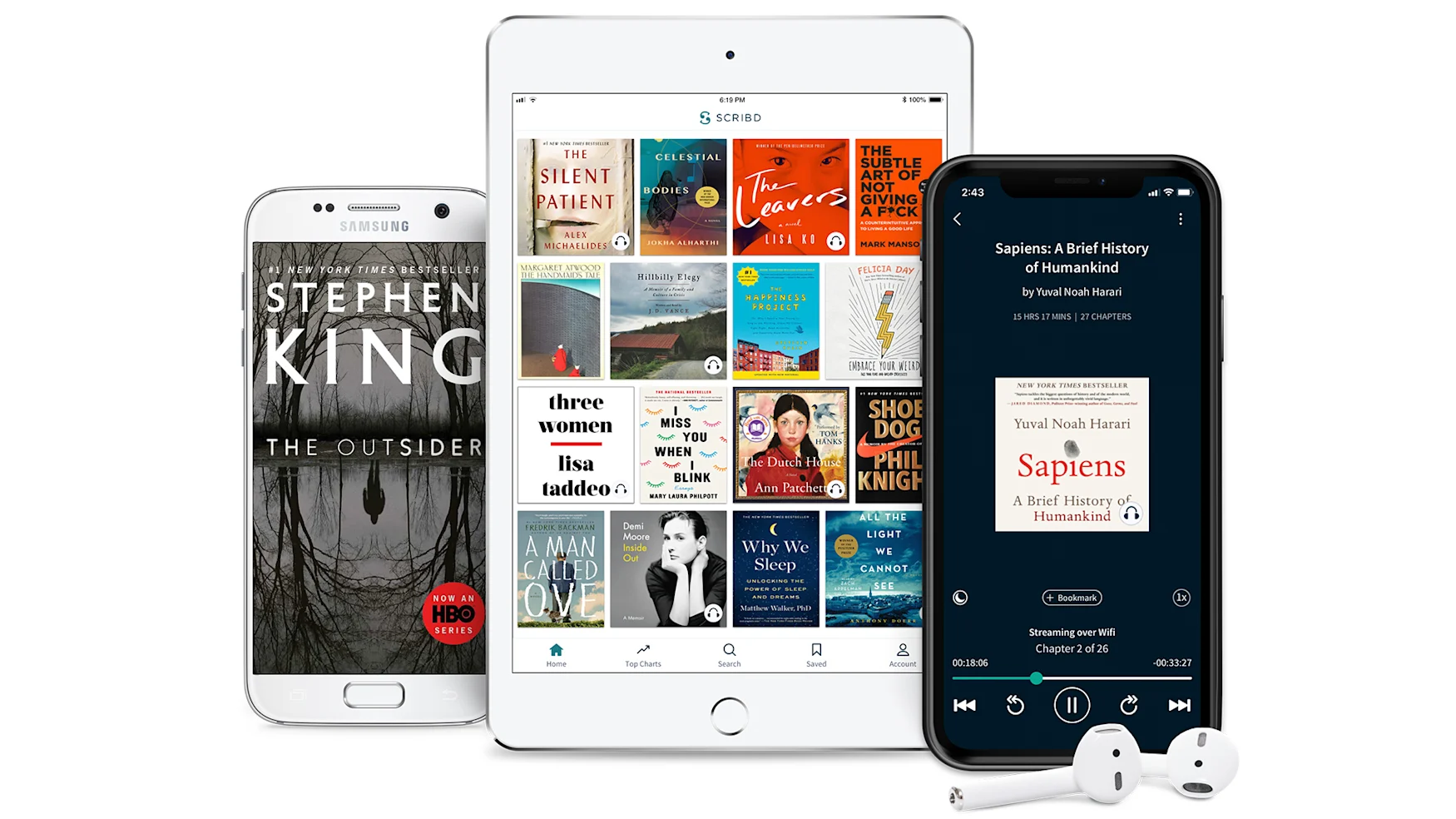
Scribd
Don’t take your habit of doom-scrolling into the new year. You could instead use the internet to find other things to read and the free Libby app is a good place to start. Powered by Overdrive, it connects you with your local library’s digital collection, allowing you to borrow and download all kinds of e-books, audiobooks, magazines, graphic novels and more. Libby also has a tag system that you can use to “save” titles for later without actually putting a hold on them (although you can do that in the app, too). If you find a bunch of audiobooks you eventually want to get to, you can give them all a “TBR” tag so you can quickly find them and borrow one when you need new reading/listening material.
As someone who uses Libby on a regular basis, I love how easy it is to borrow from my local library without leaving my home. However, there have been numerous times in which my library doesn’t have a title I’m looking for. If that happens to you often, you may want to consider a subscription service like Kindle Unlimited or Scribd, both of which give you unlimited access to a wide library of e-books for $10 per month. And for audiobook lovers, your options are Amazon’s Audible or Libro.fm, the latter of which lets you choose the local bookstore you want to support with your purchases.
E-reader
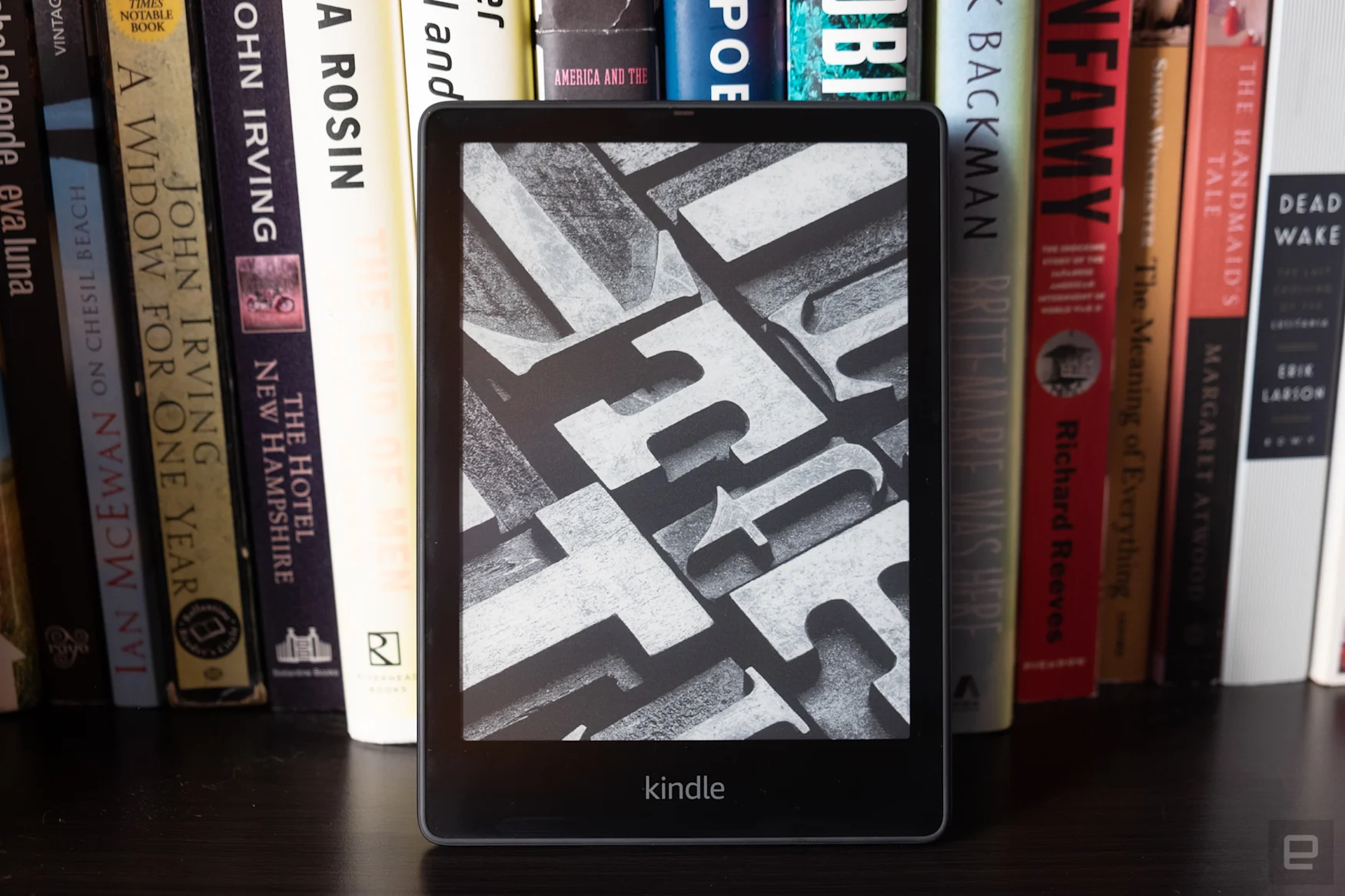
Nathan Ingraham / Engadget
E-readers are still around because so many people recognize how much better it can be to read e-books on a dedicated device — especially one with an high-contrast, e-paper display. Sure, you could read on your smartphone or a tablet, but staring at those screens all day long can be tiring for your eyes. An e-reader like Amazon’s Kindle Paperwhite or Kobo’s Clara 2E is a better choice not only for its more comfortable display, but also because it focuses your attention on reading. (If you’ve ever picked up your smartphone intending to finish a chapter only to be distracted by email or Twitter, you know how crucial this is.)
The latest Kindle Paperwhite has a 6.8-inch display with adjustable warm lights, 20 percent faster page turns and weeks of battery life. The Clara 2E is similar, with a 6-inch E-Ink display, adjustable brightness and color temperature, along with weeks of battery life. If you already get most of your e-books through Amazon, the Paperwhite is the best option. You can listen to Audible audiobooks, too, if you connect a pair of wireless earbuds to the e-reader. Kobo’s device primarily gets books via the Kobo Store, but it also supports various file types like EPUB, PDF and MOBI. Plus, it has on-device integration with Overdrive, allowing you to borrow library books directly from the e-reader.

